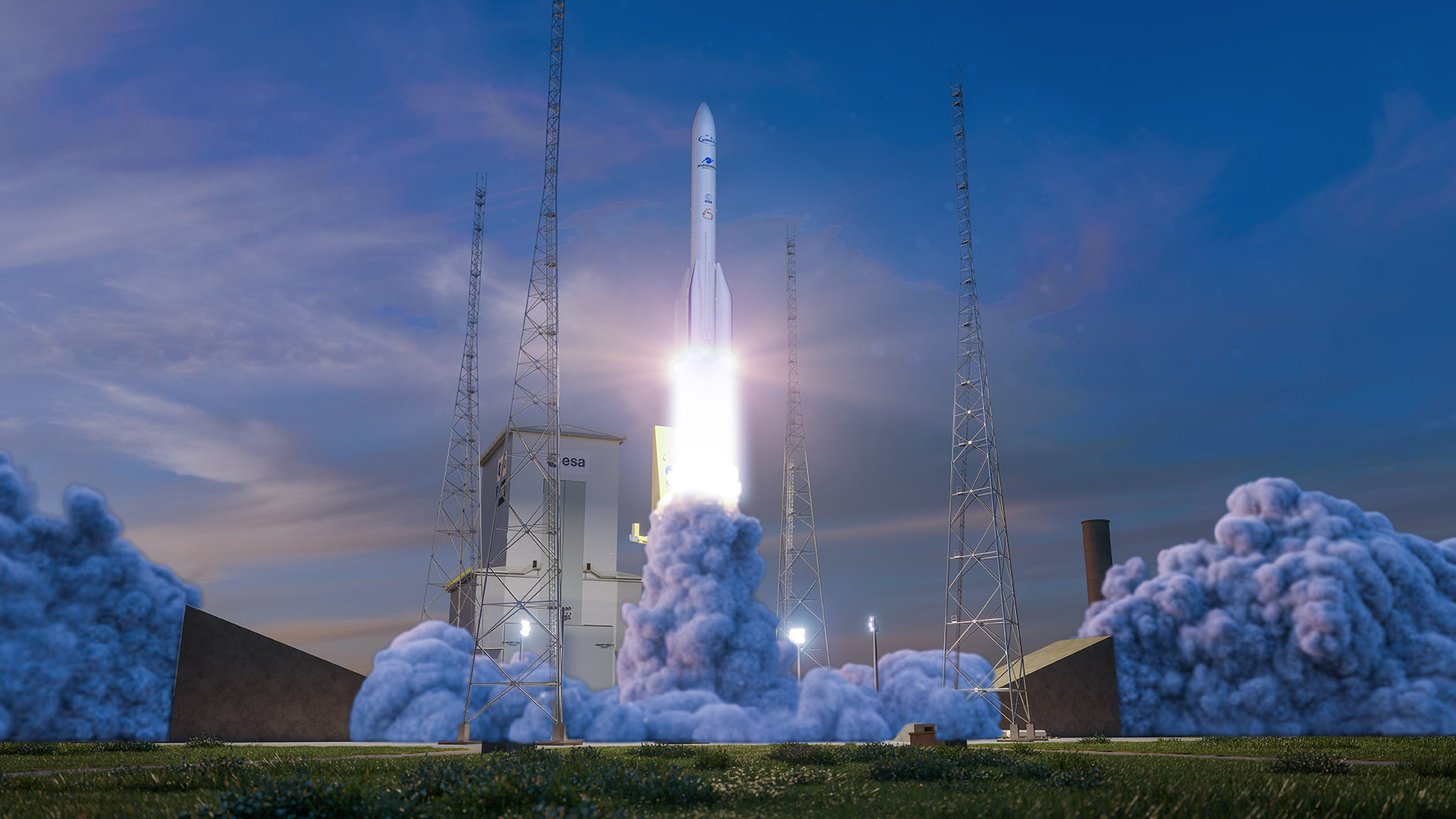The Digital Thread to Space
Traffic density in space has increased dramatically since the second half of the 20th century. While back then it was state actors that conquered space with the help of launch vehicles, nowadays it is private companies that set the tone – such as Tesla founder Elon Musk’s Space X or Peter Beck’s Rocket Lab. As a result, European companies in particular are coming under increasing competitive pressure from a more cost-intensive and essentially institutional rocket program, particularly in terms of sustainability.
In addition, the European Space Agency (ESA), which has so far relied on their cooperation with NASA to carry out manned flights into space, now wants to take the step toward an independent access to space. Only in this way can Europe independently research issues of climate and ecology and achieve strategic and military sovereignty.
To serve these interests, the sustainability and competitiveness of ESA's launch vehicles, which are developed and produced by ArianeGroup, must be further strengthened. In this context, not only must the entire development, production and operational phases of launch vehicles be digitized, but a consistent and reliable information strategy is required. This also involves interconnecting the information-providing systems from product development with production and operations.
Digital consistency
In the course of this transformation, mechanisms for evaluating the performance of information-bearing systems must be developed and introduced. These mechanisms must be consciously designed for the changing product and infrastructure systems. It is no longer the IT systems alone that are decisive for information and quality assurance, but rather the entire development, production and operating process. The systems concerned can be digitized end-to-end and thus networked consistently. The term »digital thread« is often used for this, which in turn can positively influence the circular economy strategies (e. g. predictive maintenance, reusability and recycling) of launch vehicles. In the »POLAR« research project, a Fraunhofer IPK research team, together with a team from ArianeGroup, is using the real example of launch vehicle development and production in Germany to investigate how coupled information providing systems can be applied and improved. In a holistic view of the value chain, they do not only have to consider the data and information technology solution elements, but also evaluate the process-related and organizational implications. In this context, the DMAIC methodology, the core process of Six Sigma, is intended to meaningfully complement the product life cycle-based data flow architecture. The planned tasks are divided into three main areas:
1. Status quo analysis: In the development and production environment, the orchestration of processes, organizations, IT systems and models will be determined and evaluated based on the results of the data flow. For this purpose, both existing and future performance requirements are taken into account.
2. Performance evaluation system: The user-critical functions of central IT systems in the development environment are presented. The goal is to provide a prototype that ensures that the development environment continuously meets expectations.
3. Sustainability analysis: Trends in the context of the actors in the development environment will be systematically identified and tested in future scenarios to identify necessary key factors. These scientific insights enable engineers to work more efficiently. The complex product development process can thus be shortened, making it much easier to develop more climate-friendly launch vehicle models.
With this in mind, future research projects should also address the use of climate-neutral energy sources within the entire product life cycle, according to Thomas Kruschke, research engineer at Fraunhofer IPK: »Only through climate-neutral solutions can space travel contribute in the future to achieving the Paris climate protection goals and act as a role model for other industrial sectors.«
 Fraunhofer Institute for Production Systems and Design Technology
Fraunhofer Institute for Production Systems and Design Technology

